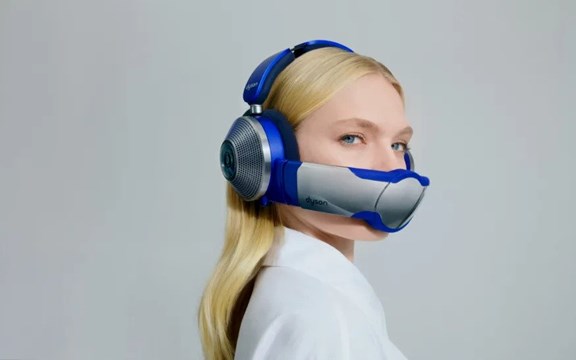Up in the stratosphere, small amounts of ozone are constantly being made by the action of sunlight on oxygen. At the same time, ozone is being broken down by natural processes. The total amount of ozone usually stays constant because its formation and destruction occur at about the same rate.
Human activity has recently changed that natural balance. Certain manufactured substances (such as chlorofluorocarbons and hydrochlorofluorocarbons) can destroy stratospheric ozone much faster than it is formed.
Ozone is a natural sunblock
Go outside on a fine day and feel the sun warm your face. What happens when a cloud passes over? You’ll notice that the cloud takes away some of the heat and light coming from the sun. In much the same way that a cloud blocks the heat on a hot day, the ozone layer in the stratosphere blocks out the sun’s deadly ultraviolet rays. It acts as our planet’s natural sunblock.
The sun doesn’t just produce heat and light. It throws out all sorts of other types of electromagnetic radiation, including ultraviolet radiation (Box 1: Meet the ultraviolet family). Because ultraviolet radiation can damage DNA it is potentially harmful to most living things, including plants (Box 2: Can plants get sunburn?).
Unfortunately our bodies can't detect ultraviolet radiation directly. We can be unaware of the harm it is doing until it is too late – for example, at the end of a day in the sun without adequate protection.
When there is less ozone in the stratosphere, more ultraviolet radiation hits us
Even a 1 per cent reduction in the amount of ozone in the upper atmosphere causes a measurable increase in the ultraviolet radiation that reaches the Earth's surface. If there was no ozone at all, the amount of ultraviolet radiation reaching us would be catastrophically high. All living things would suffer radiation burns, unless they were underground, in protective suits, or in the sea,
So what exactly is ozone?
Ozone is a form of oxygen. Each ozone molecule is made of three oxygen atoms, so its chemical formula is O3. But unlike oxygen, ozone is a poisonous gas, and an increase in its concentration at ground level is not something that we want. But in the stratosphere, where ozone exists naturally, it blocks out the sun's ultraviolet rays and is a life-saver.
Ozone-depleting substances usually contain chlorine or bromine
The synthetic chemicals called chlorofluorocarbons (CFCs) are now well-known as environmental ‘baddies’, even though they are useful and completely non-toxic substances. They get their bad name because they are ozone-eaters (properly called ozone-depleting substances). CFCs are not the only ozone-depleting substances, but they are the most abundant. Some ozone-depleting substances are naturally occurring compounds.
Ozone-depleting substances are long-lived because it takes them several years to drift up into the stratosphere. When they arrive, they are broken apart by exposure to ultraviolet radiation and that releases the chlorine atoms. These are the real ozone-killers. The chlorine atoms react with ozone, to form oxygen and chlorine monoxide.
Ozone loss occurs mainly at the poles
The ozone-destroying reactions take place most rapidly only under certain conditions in the stratosphere. These conditions – extreme cold, darkness and isolation, followed by exposure to light – occur over the polar regions after the long polar winter has finished and the first spring sun appears.
Antarctica is the worst affected area, probably because the air above it is most isolated from the rest of the atmosphere (Box 3: How ozone is lost). Scientists often refer to the part of the atmosphere where ozone is most depleted as the ‘ozone hole’, but it is not really a hole – just a vast region of the upper atmosphere where there is less ozone than elsewhere.
Ozone-poor air can spread out from the polar regions and move above other areas. In addition, direct ozone loss elsewhere is slowly increasing, although it is not occurring at the same rate as over the poles.
Related site: How ozone is destroyed by CFCs
An interactive animation that models the destruction of ozone by CFCs.
(Bureau of Meteorology, Australia)
Scientists around the world regularly monitor ozone-depleting substances and the amount of ozone in the stratosphere. In Australia, the Australian Bureau of Meteorology and the CSIRO Division of Atmospheric Research jointly manage the Cape Grim Baseline Air Pollution Station. The Cape Grim station is located in remote north-western Tasmania, in the path of strong westerly winds that carry air thousands of kilometres across the Southern Ocean. Air at Cape Grim is regularly sampled in order to monitor atmospheric composition. (Another reason to monitor ozone-depleting substances is because most are also powerful greenhouse gases.)
Most ozone-depleting substances are banned or strictly controlled
Many substances other than chlorofluorocarbons are also ozone-depleting. Examples are carbon tetrachloride (used in dry cleaning), and methyl bromide (used as an insecticide for soil fumigation). An Australian scientist (Jonathan Banks) has been internationally recognised for his work in finding a replacement for methyl bromide (Box 4: Australia finds a replacement for methyl bromide).
CFCs, previously used as refrigerants, foam-blowing agents and propellants in spray cans, are now banned in Australia (and many other countries). Their temporary replacements, the hydrochlorofluorocarbons, are still slightly ozone-depleting, though not to the same extent. HCFCs are also being phased out.
An international agreement called the Montreal Protocol limits the production and use of ozone-depleting substances. A slowing down in the rate of ozone loss has been measured, and the concentration of CFCs in the atmosphere is levelling off. But because of a long lag time, ozone depletion will get worse at least until the year 2000 and the ozone hole will continue for some decades after that. If all countries keep to the targets set by the international community in the amendments to the Montreal Protocol, the ozone in the stratosphere should eventually recover.
Boxes
1. Meet the ultraviolet family
2. Can plants get sunburn?
3. How ozone is lost
4. Australia finds a replacement for methyl bromide
Source:
Please rate this
Poor




 Excellent
Excellent




 Excellent
Excellent
Votes: 0 |NaN out of 5






